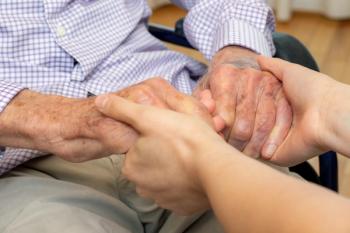
New breast cancer screening guidelines draw praise, and some criticism
The U.S. Preventive Services Task Force recommends women should start screenings at age 40. But some say the panel should have called for women to get mammograms every year.
Women should begin getting screened for breast cancer at the age of 40, according to new
Previously, the guidelines suggested women begin regular mammograms at age 50. The task force issued the recommendations Tuesday and cited the disparities among women in minority groups, including Black women.
Under the task force’s new guidance, women between the ages of 40 and 74 should be screened for breast cancer every other year.
While an advisory body, the panel makes recommendations to the federal government and is supported by the U.S. Department of Health and Human Services.
The new guidelines reflect the insights of additional research, says Carol Mangione, the task force’s immediate past chair. The task force estimated that by starting screenings at age 40, the number of lives saved could rise by 19%.
“New and more inclusive science about breast cancer in people younger than 50 has enabled us to expand our prior recommendation and encourage all women to get screened every other year starting at age 40,” Mangione said in a statement. “This new recommendation will help save lives and prevent more women from dying due to breast cancer.”
While the task force said nearly half of all women have dense breasts, increasing their risk of breast cancer, the group stopped short of recommending additional screening with breast ultrasound or MRI. The task force said more research is needed.
And the task force said further study is needed on weighing the benefits and risks of screenings in women over the age of 75.
Black women are more likely to die of breast cancer than white patients, and the task force cited that as a factor in adjusting its recommendations to begin regular screenings at age 40.
“Ensuring Black women start screening at age 40 is an important first step, yet it is not enough to improve the health inequities we face related to breast cancer,” Wanda Nicholson, vice chair of the task force, said in a statement.
“In our draft recommendation, we underscore the importance of equitable followup after screening and timely and effective treatment of breast cancer and are urgently calling for more research on how to improve the health of Black women,” Nicholson said.
Lola Fayanju, chief of the division of breast surgery at the University of Pennsylvania’s Perelman School of Medicine, said the revised guidelines could save more Black women.
“I cannot emphasize how important this development is,” Fayanju
The task force also called for more research to close disparities in outcomes for women in minority groups, including Black, Hispanic, Latina, Asian, Native American, and Alaska Native women.
The panel also noted that its recommendations for women applied to cisgender women and other people assigned female at birth.
While many praised the task force for recommending an earlier age to begin screenings, some said the guidelines didn’t go far enough.
In an
“Research has shown that yearly mammography starting at age 40 saves more lives -- reducing breast cancer mortality by
Vincoff and others criticized the task force for opting against recommending of additional screening for women with dense breasts. “Women with dense breasts and their doctors need guidance about what additional testing they need,” Vincoff wrote. “They won't be able to find that guidance in the USPSTF's proposed recommendations.”
Some are advocating women with higher risks to begin screenings earlier. The
The
Some health systems say screenings for breast cancer, while improved since the height of the COVID-19 pandemic,








































